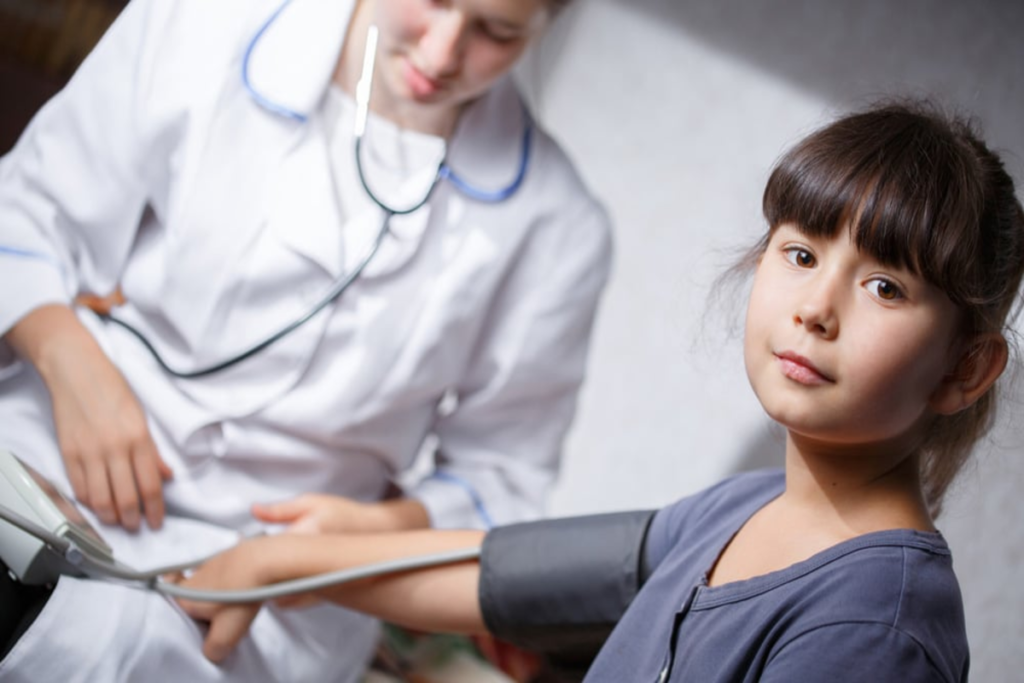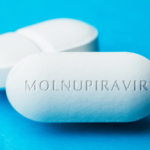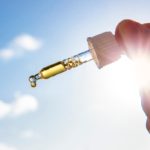Childhood high blood pressure?

Childhood and adolescent hypertension (hypertension) remains poorly understood and underdiagnosed. However, it contributes to the early development of cardiovascular disease. Being most often asymptomatic, its systematic screening is essential, as a secondary and therefore potentially curable cause can be identified. Therefore, a minimum balance is always necessary.
Risk factors?
Arterial hypertension (hypertension) is still too little understood in pediatrics. Yet it affects around 3.5% of children and adolescents, and is more common in cases of overweight or obesity where it can affect up to 24% of patients. Identifying it is necessary because just one measurement of high blood pressure (BP) in childhood increases the risk of hypertension and metabolic syndrome in adulthood. In pediatrics, the risk factors for hypertension identified are male sex, family history and, to a lesser extent, being the oldest and having a low birth weight.
When and who to screen?
The American Academy of Pediatric (AAP) issued recommendations for hypertension in 2017. Blood pressure (BP) measurement should be routine in all children from the age of 3, on an annual basis. It should be measured at each consultation in case of obesity, kidney disease, history of coarctation of the aorta, diabetes or hypertensive treatment.
It should be performed annually, before the age of 3, in children born prematurely or with intrauterine growth retardation. Finally, it must be measured in the event of a clinical call point.
How to measure BP?
BP should be measured calmly, ideally after 5 minutes of rest, lying or sitting, with the arm, preferably straight, resting on a support. Two measurements should be taken, 3 if hypertension is suspected. The cuff must be of suitable size, a cuff that is too small increases the blood pressure: in height it must measure two thirds of the height between the acromion and the olecranon. The oscillometric method is the most widespread, but the auscultatory method remains the most reliable, with the least risk of increase, it should therefore be preferred and be used to confirm hypertension.
Ambulatory blood pressure measurement (ABPM) is increasingly used, it should make it possible to confirm borderline or labile hypertension, eliminate a “white coat effect” and detect the absence of nocturnal dipping. It can be performed from the age of 6, in patients over 120 cm. The home self-measurement should be performed with a device approved for children (devices taking measurements on the wrist are not) and is used primarily to monitor patients with already known hypertension. It should not be used to diagnose hypertension.
What are the threshold values for hypertension?
BP standards change based on age, gender and height, up to age 13 when adult standards apply. In children, the definition of hypertension is arbitrary and was established from the normal distribution of BP in healthy populations. The most recent standards were released by the AAP in 2017. These BP tables should be consulted to accurately diagnose hypertension in a patient after one year of age. A simplified screening table has also been proposed: if the patient has a BP value lower than that of his sex and age, the negative predictive value of hypertension is 99%.
Secondary or essential hypertension?
A secondary and potentially treatable cause should always be looked for, especially since the child is young and the hypertension is severe. In children under 1 year of age, 99% of hypertension is secondary, with mainly renal or renovascular abnormalities and coarctations of the aorta. By primary school age, 70 to 85% of hypertension is secondary, with a marked predominance of renal or renovascular abnormalities, but coarctation of the aorta can still be diagnosed. In adolescents, 85 to 95% of hypertension is essential. Hypertension is more likely to be essential when there is a family history of hypertension, overweight or obesity, sleep apnea and low birth weight. But it must remain a diagnosis of elimination. Etiological assessment Interrogation and clinical examination They allow orientation on the etiology and search for organ damage.
Additional tests?
Le bilan de première intention, qui doit être réalisé devant chaque découverte d’HTA, comporte : un dosage sanguin d’urée, de créatinine, d’ionogramme, une NFS, un bilan lipidique (si surpoids ou antécédent familial de dyslipidémie), un ionogramme urinaire, une recherche de protéinurie (microalbuminurie) et d’hématurie. Une échographie rénale avec Doppler doit être réalisée, surtout si l’âge est inférieur à 6 ans ou si le patient présente une anomalie du bilan rénal ou urinaire. Ensuite, seulement selon les résultats du bilan de première intention et selon les signes d’orientation, pourront être réalisés un bilan thyroïdien, un dosage de la rénine et de l’aldostérone, le cortisol libre urinaire des 24 h, les catécholamines urinaires et les métanéphrines ; on pourra discuter une polysomnographie. Afin d’évaluer le retentissement de l’HTA, il faudra réaliser une échographie cardiaque et rechercher une insuffisance rénale et une microalbuminurie. Le fond d’œil à la recherche d’une rétinopathie hypertensive n’est nécessaire qu’en cas d’HTA sévère. Traitement Le traitement de l’HTA doit toujours s’appuyer sur les règles hygiéno-diététiques (perte du surpoids, régime adapté, activité physique). La prescription du traitement antihypertenseur au long cours doit rester l’apanage du spécialiste, d’autant plus si une monothérapie n’est pas suffisante.
Conclusion
L’hypertension artérielle est un vrai enjeu de dépistage et de diagnostic. En raison de son caractère le plus souvent asymptomatique, seule une prise de TA systématique permettra de bien la dépister. Il faut également savoir y penser devant des symptômes évocateurs, même chez les jeunes enfants. Une MAPA pourra aider à confirmer l’HTA chez les enfants de plus de 120 cm. Un interrogatoire et un examen clinique détaillés et orientés sont nécessaires, de même qu’un bilan minimal chez tous les patients à la recherche d’une étiologie potentiellement traitable, et d’un retentissement d’organe.




